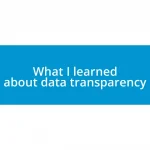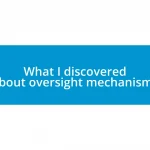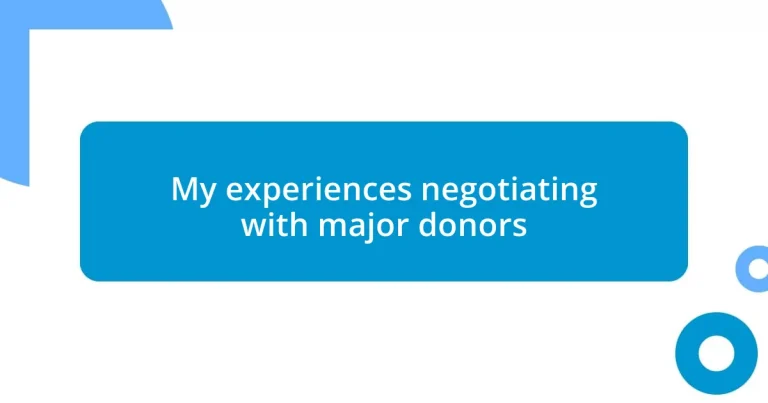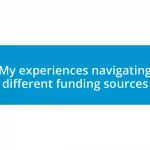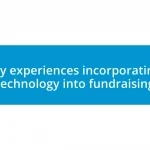Key takeaways:
- Understanding the unique motivations and personal stories of major donors is crucial for effective engagement.
- Building trust is essential; vulnerability and authenticity can transform donors into passionate advocates.
- Compelling proposals should focus on storytelling, clarity, and inviting feedback to foster deeper collaboration.
- Maintaining relationships post-negotiation through personal touches and updates enhances donor loyalty and engagement.
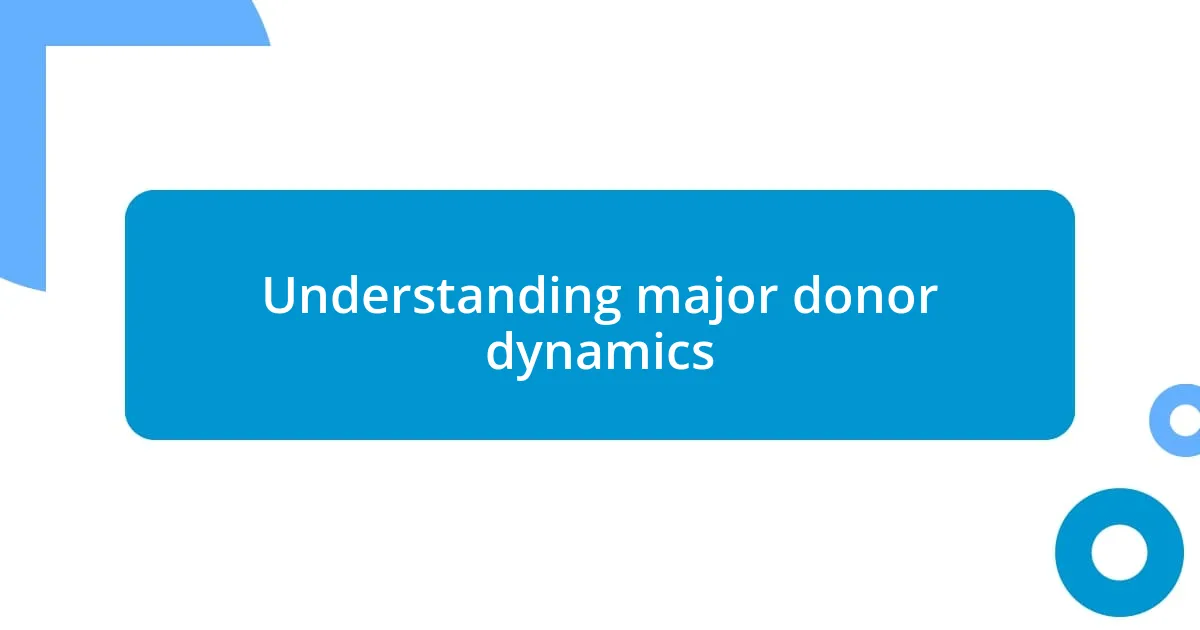
Understanding major donor dynamics
When I first started working with major donors, I quickly realized that understanding their motivations is crucial. Each donor has unique reasons for their generosity, whether it’s a personal passion, a family legacy, or a desire for social impact. I remember a conversation with a donor who had a deep connection to education because his mother was a teacher; it illuminated for me how personal stories shape giving.
The dynamics of major donors often involve a mix of emotional and logical appeals. I’ve learned that sharing tangible results can be powerful, but nothing resonates like a heartfelt story. Once, a donor told me that seeing the direct impact of their contribution at a community event made them feel valued and connected. It’s fascinating how these relationships require a balance of data and emotion to truly engage them.
Furthermore, building trust is essential in this dynamic. I’ve often found that vulnerability can be a strength. When I openly shared challenges my organization faced, it fostered deeper dialogue. Could it be that authenticity draws more support than any glossy presentation ever could? I believe it’s this genuine connection that transforms donors from mere supporters into passionate advocates for our cause.
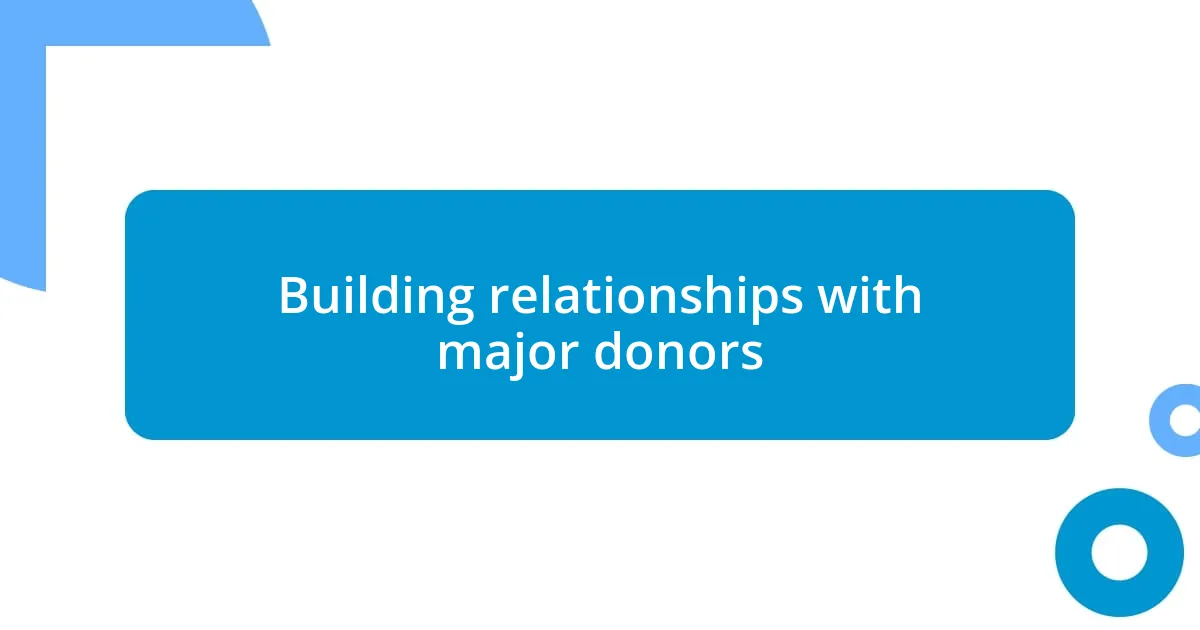
Building relationships with major donors
Building relationships with major donors often goes beyond mere financial transactions; it’s about creating a partnership based on trust and communication. I recall a memorable brunch I had with a long-time supporter, who later became a key donor. As we shared stories about our families and life experiences, I saw how our personal connection directly influenced their desire to support our mission. It made me realize that these relationships thrive on mutual understanding, where both parties feel valued.
I’ve also observed the importance of regular check-ins, even when there’s no immediate fundraising goal. One donor I spoke to mentioned how they appreciated receiving updates about our work, even when they weren’t asked for more support. These little gestures can strengthen bonds significantly, showing donors that they’re part of a community and not just a source of funds. I always try to send a personal note or a small gift after a significant milestone, which turns out to create a lasting impression.
Additionally, being transparent about the impact of their contributions can foster a deeper connection. During a follow-up call, I once shared how a donor’s previous support had allowed us to launch a critical initiative. The joy in their voice was palpable—they felt like they were part of something larger than themselves. I believe this level of engagement is vital; it transforms relationships into partnerships that are driven by shared goals and mutual excitement.
| Action | Effect |
|---|---|
| Personal Connection | Strengthens trust and commitment |
| Regular Communication | Reinforces donor’s sense of belonging |
| Transparency in Impact | Deepens emotional investment |
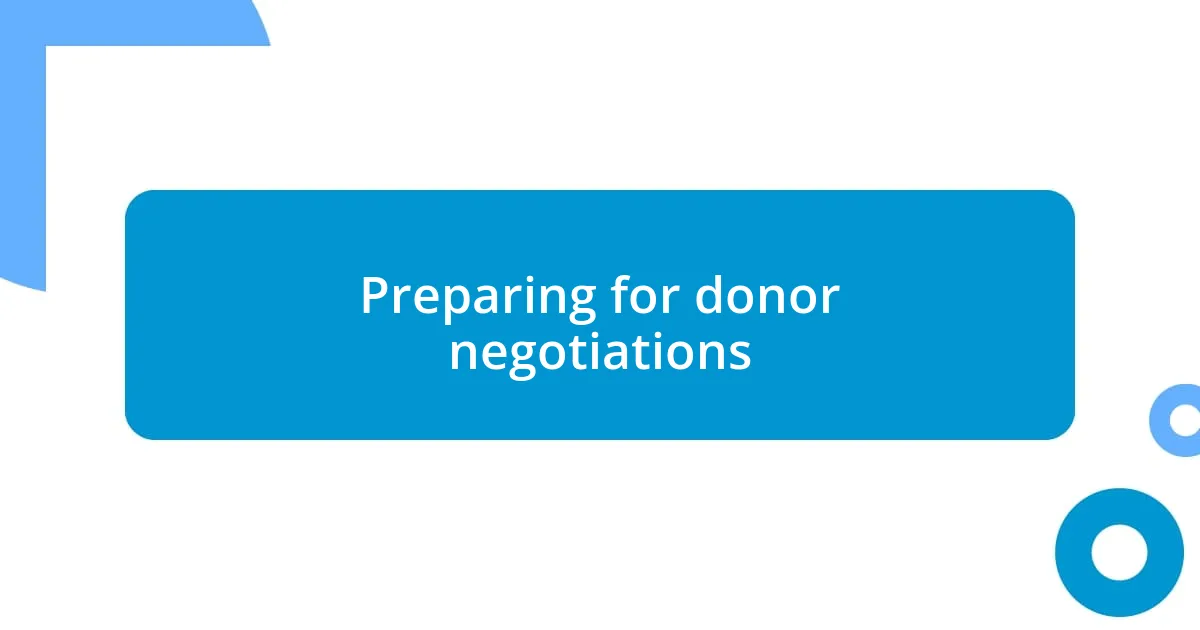
Preparing for donor negotiations
Preparing for donor negotiations requires more than just understanding financial aspects; it’s about tilting the balance in favor of genuine connection. In my experience, I’ve found meticulous preparation to be essential. Before any meeting, I take the time to research not just the donor’s past contributions, but also their interests and values. For example, I once stepped into a negotiation knowing a donor’s passion for environmental sustainability. When I tailored my proposal to align with their values, the conversation flowed naturally, and we found common ground quickly.
Here are some key aspects I focus on when preparing for these important discussions:
- Know Your Donor: Dive deep into their history with your organization and their philanthropic interests.
- Craft a Compelling Narrative: Prepare stories that highlight the impact of their potential contribution—this adds an emotional touch.
- Set Clear Objectives: Define what you hope to achieve from the negotiation and have flexible options to discuss.
- Practice Active Listening: Anticipate their concerns, and be ready to address them thoughtfully during the meeting.
- Build Rapport Ahead of Time: Send a personal note or have a casual conversation before the negotiation to break the ice.
In my journey, I’ve discovered that the most memorable negotiations often stem from being well-prepared yet adaptable. I vividly remember one particular meeting where I was ready to discuss several funding options. Halfway through our dialogue, the donor brought up their experience of volunteering abroad. I could pivot our conversation to relate their travel experiences to the project we were discussing, which enriched our discussion tremendously. This taught me that nimbleness in conversation can enhance the negotiation process, making it more about collaboration than mere financial transaction.
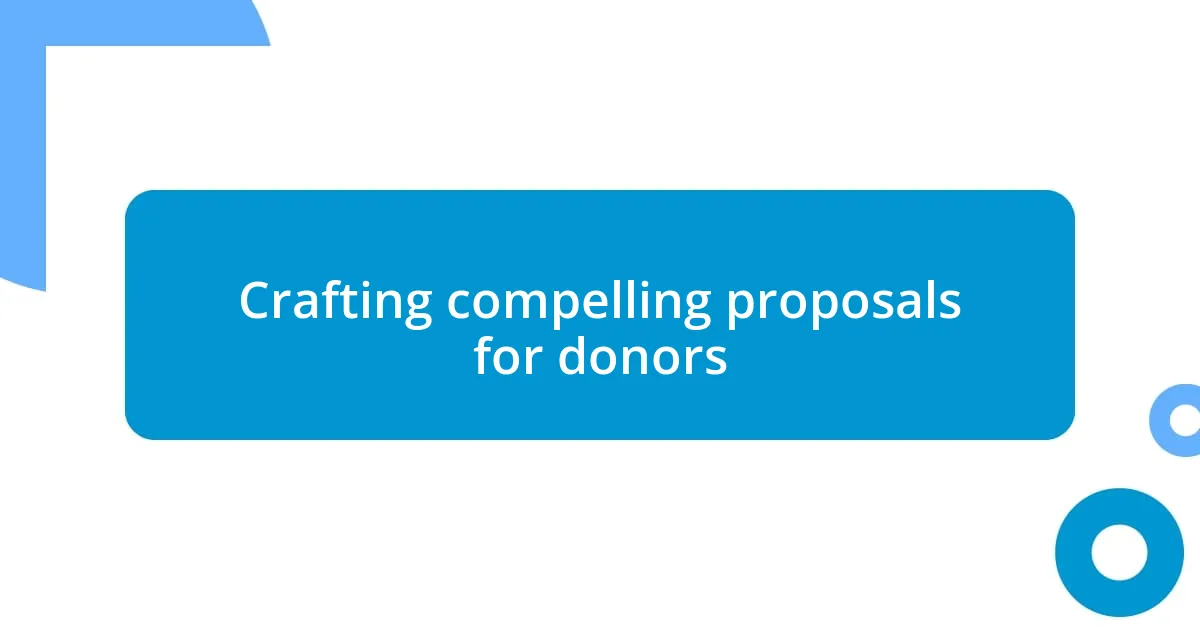
Crafting compelling proposals for donors
Crafting compelling proposals for donors hinges on storytelling that resonates deeply. I’ve learned that a proposal should not just outline needs but weave a narrative that inspires action. One time, I replaced the usual statistics with a vivid account of how a previous donation transformed a community. The donor’s eyes lit up as they connected emotionally to the story—it became far more than numbers on a page; it was about real lives changed.
When structuring your proposal, clarity and specificity are key. I once created a detailed timeline of how pledged funds would be utilized throughout a project. This approach allowed the donor to visualize their contribution’s impact step by step. I find that when donors can see their potential role in the journey, they’re much more likely to engage and invest fully.
Ultimately, it’s about making your proposal a dialogue, not a monologue. How do you invite feedback? In my practice, I often conclude my proposals with open-ended questions that provoke thought. For example, asking, “Which aspect of this initiative resonates most with you?” not only encourages dialogue but also shows that I value their opinion. I’ve found that this approach not only fosters connection but also opens the door for deeper collaboration.
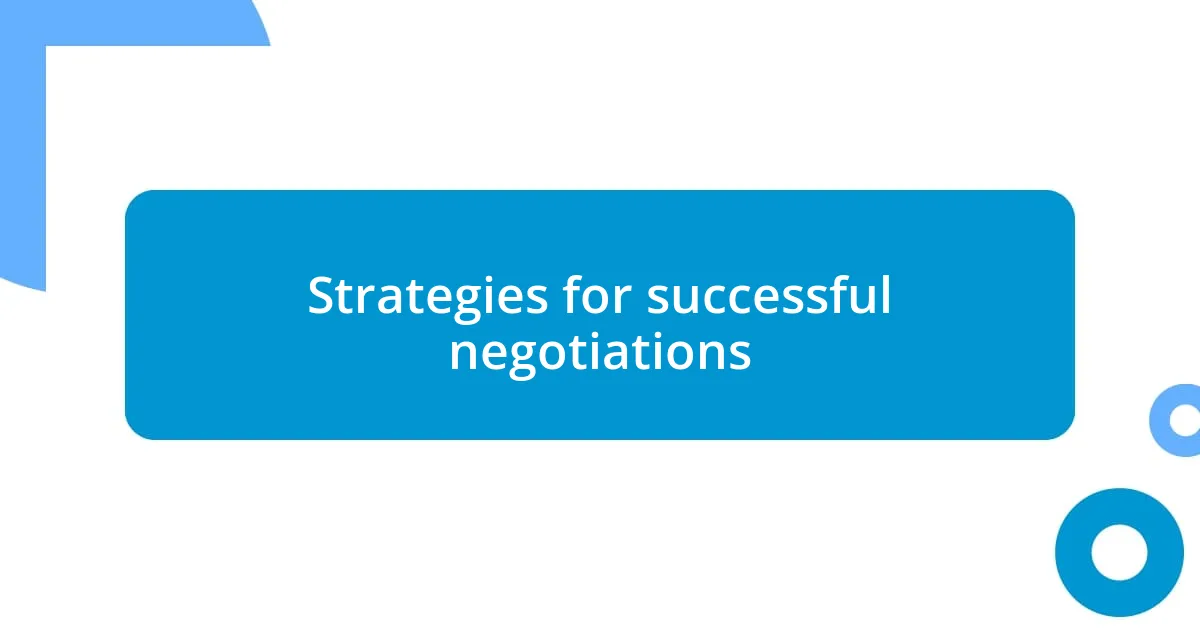
Strategies for successful negotiations
Negotiating with major donors is an art that intertwines strategy with authenticity. I often focus on establishing a genuine connection right from the beginning. There was a time when I met with a potential donor who had just faced a significant loss in their family. Instead of launching directly into our agenda, I took a moment to express my condolences and share a personal story of loss. This openness transformed the atmosphere of our conversation, allowing us to discuss not just financial commitments, but shared values and priorities. Could prioritizing emotional connection be one of the most powerful tools in our negotiation toolkit?
Another strategy that I can’t emphasize enough is being transparent about the challenges we face. Early in my career, I hesitated to discuss project difficulties, fearing it might push donors away. However, I learned that honesty can build trust. In one negotiation, I detailed the hurdles we were up against in a project and sought the donor’s advice on navigating them. Surprisingly, this candid discussion led the donor to contribute more not just financially, but also by offering valuable insights from their own experiences. Isn’t it fascinating how vulnerability can inspire generosity?
I also prioritize follow-up after the initial negotiation. Reflecting on my past experiences, I noticed that simple gestures—like a thank-you note or a brief call to share progress—maintain the connection and show that their contribution truly matters. Once, after a successful negotiation, I sent a simple message highlighting how the donation was being utilized. The donor responded with enthusiasm, sharing their vision for future projects. This interaction reinforced my belief that nurturing relationships post-negotiation adds immense value and could even pave the way for future collaborations. Isn’t it all about keeping the conversation alive?
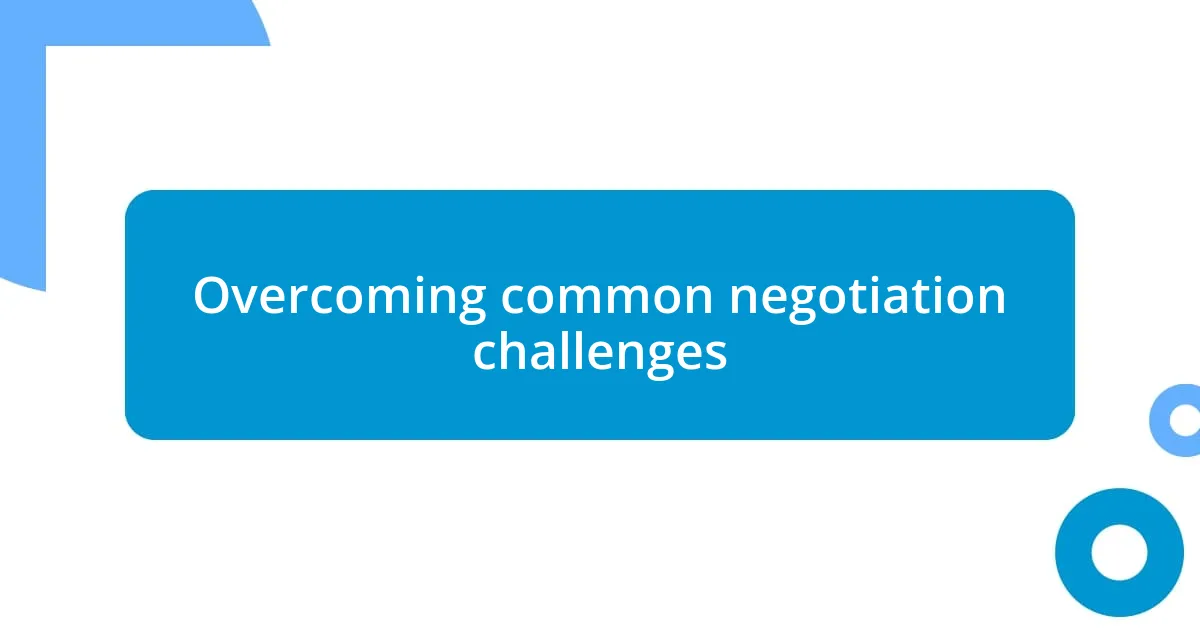
Overcoming common negotiation challenges
Navigating common negotiation challenges often requires a blend of empathy and strategy. I recall a negotiation where the donor seemed hesitant to commit due to concerns about project viability. Instead of brushing off their concerns, I took a moment to genuinely listen. Acknowledging their fears and discussing past project successes not only eased their worries but also reinforced their confidence in our capability. How often do we overlook the power of simply listening?
Another challenge I frequently encounter is the disparity in expectations. I remember a situation where a major donor expected a rapid turnaround on project results, but the reality dictated a longer timeline. By proactively laying out a realistic timeline and discussing the reasoning behind it, we navigated this potential pitfall together. This transparency shifted the focus from frustration to understanding. Isn’t it crucial to align expectations upfront to avoid miscommunication down the line?
Finally, dealing with conflicting priorities can be tricky. During one negotiation, a donor was passionate about environmental issues, while our project was focused on educational needs. I found common ground by highlighting how educational initiatives could incorporate sustainability practices. This approach not only showcased our flexibility but sparked excitement around a collaborative effort that served both interests. Doesn’t it feel great when you can turn a potential conflict into a creative solution?
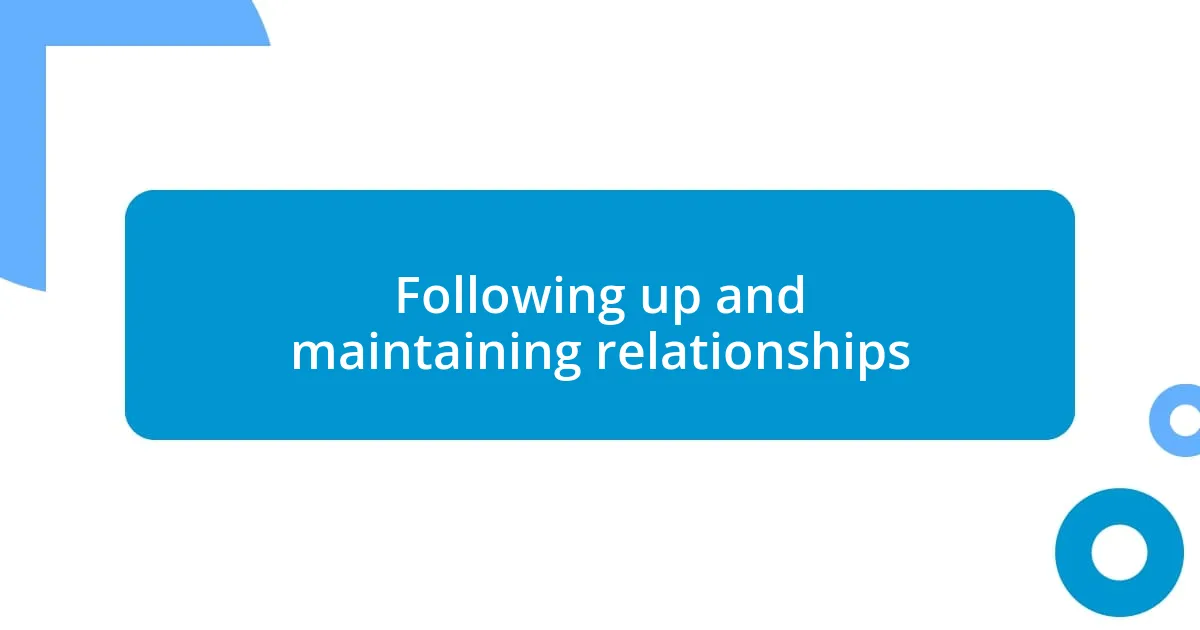
Following up and maintaining relationships
Following up after a negotiation is where the relationship takes on new life. I remember reaching out to a donor a few months after a successful campaign, curious about how they felt regarding their contribution’s impact. Their heartfelt response underscored how much they valued staying in the loop. It’s moments like these that remind me: when we take the time to provide updates, we reaffirm the donor’s place in our journey and instill a sense of ownership over the outcomes.
Maintaining relationships isn’t just about good manners; it’s a strategic advantage, too. I’ve learned that inviting major donors to exclusive events or behind-the-scenes visits creates meaningful touchpoints. One time, I organized a luncheon to thank various contributors, and seeing them interact with the team was illuminating. Their excitement about the projects sparked new ideas for collaboration! Isn’t it incredible how a simple gathering can breathe new life into a relationship?
I’m convinced that personal touches are the key to lasting connections. I’ve started sending handwritten notes celebrating small milestones related to the donor’s interests or even just checking in. There was a particular donor who once shared a passion for community arts. After a successful project, I sent a card featuring a local artist’s work, paired with a brief update. Their joy was palpable in their response, solidifying a bond that went beyond just dollars and cents. Could this be the secret ingredient in fostering loyalty?


